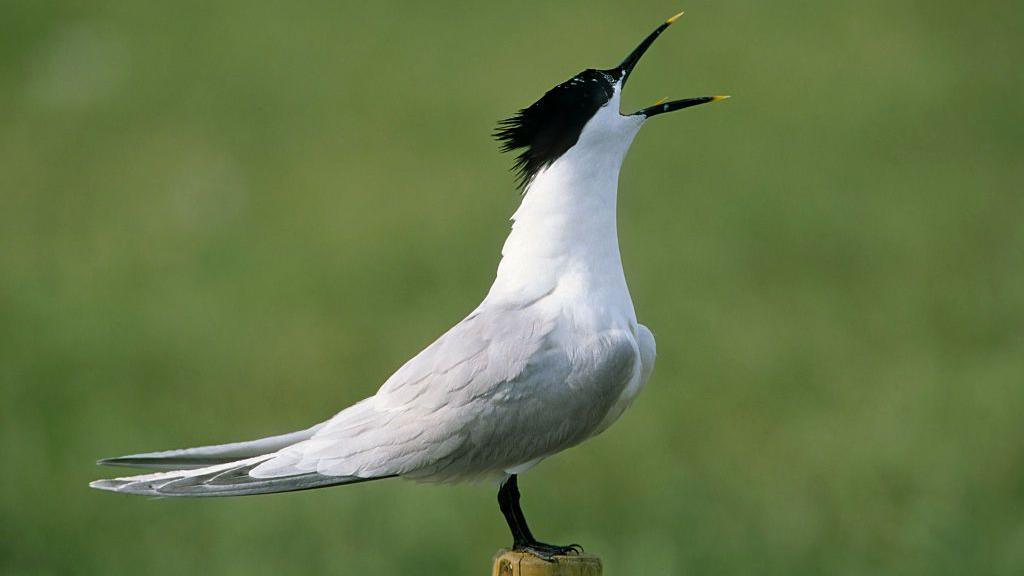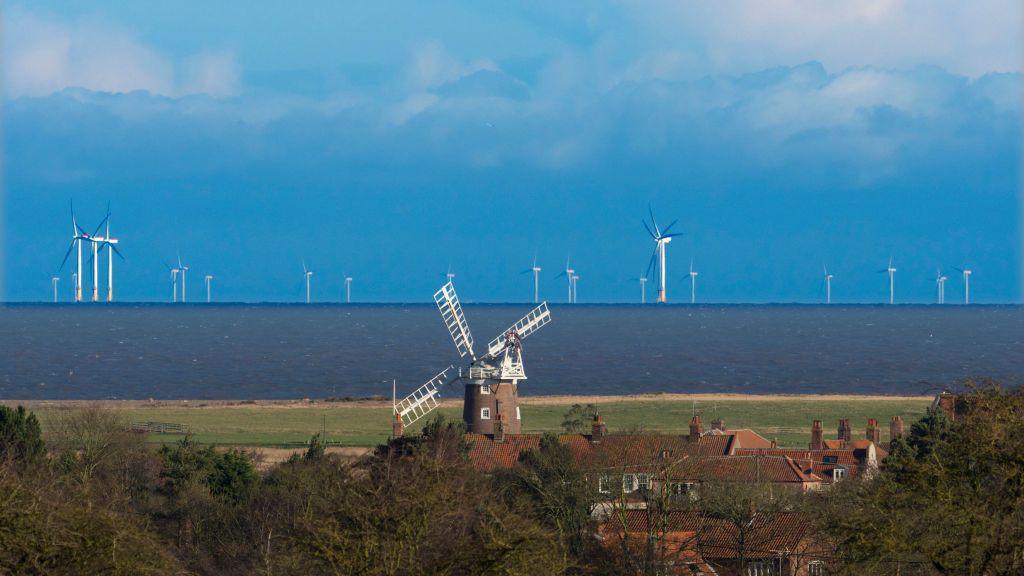English wind farms could aid Scots seabird revival

A new haven for sandwich terns could be created in south-west Scotland
- Published
A seabird colony in south-west Scotland could be set for a revival - courtesy of two wind farms hundreds of miles away.
Plans have been lodged to create a haven for sandwich terns on Loch Ryan at a spot they have not nested at for over a decade.
It is part of mitigation measures for the Sheringham Shoal and Dudgeon offshore wind farm extensions which could affect bird numbers off the Norfolk coast.
A search of shorelines came up with the Dumfries and Galloway site as the best location to try to encourage sandwich terns to return.
The plans would see a special coastal habitat created for the birds by creating an inland pool with islands on the western shore of Loch Ryan.
They would also see bird hides built and an upgraded bridge crossing a local burn.
Developers Equinor currently operate three offshore wind farms - two off the coast of Norfolk and the world's first floating wind farm, Hywind Scotland, off the coast of Peterhead.
They are also in the process of building the world's largest offshore wind farm at Dogger Bank off the Yorkshire coast.

The Sheringham Shoal wind farm sits off the Norfolk coast
The development in southern Scotland is intended to compensate for the predicted impact on breeding sandwich terns of extensions to its two Norfolk schemes.
The site was selected after a detailed search for suitable places to create or restore a habitat for the birds.
The locations considered stretched all the way from Dungeness in Kent to Caithness and Orkney in Scotland.
A report concluded that the area in Galloway was the best option.
"That is a site in south-west Scotland which, if restored, would significantly improve the geographical coherence of the sandwich tern breeding range in Britain and Ireland," it found.
Get in touch
What stories would you like BBC News to cover from the south of Scotland?
Loch Ryan has been a historical breeding site for the birds over many decades and has a suitable habitat for them.
A colony was known to be located there until about 15 years ago.
While they can still be seen feeding in the area there is no longer believed to be any nesting activity.
The new habitat could be protected from human disturbance but still potentially allow public viewing from a hide.
It would also be surrounded by a "predator-proof" fence to help protect the birds.
Related topics
- Published27 September 2012